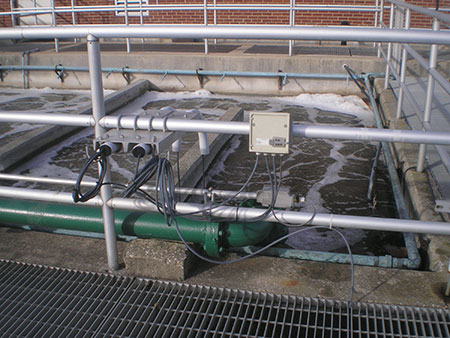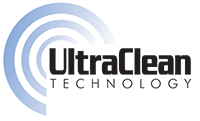Low Water Resource Recovery Facility Operating Costs and High Water Quality
Providing the best value to wastewater customers requires a team of operators that have a deep sense of ownership and are committed to continuous improvement. Such is the case for the operating staff at one wastewater treatment plant whose progressive attitude and a philosophy of “do it right” led them to an investment in online instrumentation and SCADA for compliance, monitoring, and control.
Wastewater Treatment
An advanced level of wastewater treatment is provided for an average daily flow of 2 MGD. The flowsheet consists of equalization, preliminary treatment, primary settling, trickling filters, a 2-stage activated sludge system, and tertiary filters. The National Pollutant Discharge Elimination System (NPDES) discharge permit requires monitoring of pH, total suspended solids (TSS), and 5-day carbonaceous biochemical oxygen demand (CBOD5) in the influent and limits the pH and the concentration of TSS, CBOD5, ammonia-nitrogen (NH3-N), and dissolved oxygen (DO) in the treated effluent.
The wastewater plant invested in SCADA and the YSI IQ SensorNet online process monitoring system several years ago. Selection of the SCADA component was easy on account of the previous experience of the Utilities Director in the power generation industry. Selection of the IQ SensorNet came about after a trusted associate brought it to the attention of the wastewater superintendent.
The superintendent liked the IQ SensorNet system overall, especially the ability to measure up to 20 parameters on a single network. The original system installed consisted of a universal controller (2020 3G); seven sensors including two pH (SensoLyt), three DO (TriOxmatic), and two TSS (ViSolid); a Modbus module for communication with the PLC; and a spare sensor connection cable for calibrating sensors in the lab.
Compliance
The most critical objective for any wastewater treatment plant is compliance with the discharge permit. Continuous measurements from a pH sensor in the influent and pH and DO sensors in the effluent directly satisfy discharge permit reporting requirements and verify compliance with discharge permit limitations. Additional sensors deployed in the treatment system enable operators to automatically control operating parameters to ensure cost-effective compliance.
Control
The activated sludge aeration system represents the bulk of treatment and the largest portion of operating costs. Therefore, as the superintendent puts it, “It seems unwise to not fine-tune the aeration system to the greatest extent possible.”
Mixed liquor suspended solids (MLSS) concentration and dissolved oxygen concentration are critical operating parameters for the activated sludge system. If the concentration of either is inadequate, treatment performance degrades and discharge permit violations occur. On the other hand, excessive levels result in wasted energy and higher operating costs that must be passed on to rate-payers. A novel method is utilized to maintain the desired MLSS concentration in each stage of the activated sludge system by automated sludge wasting.
First, sludge is wasted every 8 hours on a timer. This is important to steady the operation of the biological system and reduce the potential for upset, especially over weekends and holidays when the plant is not fully staffed. Excess sludge from the first stage is wasted to the second stage; excess sludge from the second stage is co-settled in the primary settling tanks.
Second, the amount of sludge wasted is based on the difference between the MLSS setpoint and the current reading from a ViSolid sensor located at the tail end of each stage. Third, the amount of sludge wasted is adjusted based on the most recent ½ hour settling test result entered by the Operator to prevent too much or too little wasting if sludge settleablity changes or the sensor calibration drifts unexpectedly.
Routine maintenance of the ViSolid sensor is performed to ensure the highest accuracy. A single-point calibration is performed weekly by simply adjusting the sensor reading based on a laboratory suspended solids measurement from a sample taken near the sensor.
The UltraClean™ ultrasonic cleaning system prevents fouling of the sensor. However, for good measure, the sensor is cleaned every three weeks by simply wiping it off with a damp rag. In total, maintenance requires not more than 15 minutes of operator attention per week.
>> Watch UltraClean technology in action 
Dissolved oxygen setpoints are also maintained automatically. Modulating valves on the air supply piping to each of the 1st and 2nd stage aeration basins are adjusted directly in response to readings from TriOxmatic DO sensors installed at the tail end of each stage. Implementation of DO control in the activated sludge system, in addition to other improvements including installation of a smaller blower, has allowed the realization of substantial energy savings.
In addition to verifying compliance with the discharge permit, measurements from the online TriOxmatic dissolved oxygen sensor in the effluent are used to directly maintain compliance. An automated valve opens to increase airflow to the post aeration tank if effluent DO falls below the set point.
Monitoring
The IQ SensorNet system was expanded after the original project to provide online monitoring of the treatment process. It was a simple matter of purchasing additional sensors, mounting them into the desired locations, and connecting them into the existing IQ SensorNet network. Two VisoTurb turbidity sensors were installed, one in the influent to the tertiary filters and the other in the final effluent channel to monitor the performance of the 2nd stage activated sludge system and the tertiary filters.
The turbidity sensors detect small changes in the quality of wastewater before it becomes visually apparent. Operators trend the measurements from the online turbidity sensors to stay ahead of the process and enable proactive adjustments before bigger problems could occur.
Conclusion
The Utility has not raised user fees in 15 years. A big reason for that is the commitment of the wastewater department staff. It was their progressive attitude and desire to “stay ahead of the curve” that gave rise to the project to install the SCADA system and online sensors. The investment has paid off. At the time of project completion, user fees were above the median for the State.
Today, user fees are 12 percent below the median. A high level of performance is also achieved despite substantial industrial wastewater loadings. Over 98% of TSS and CBOD5 is removed on average and monthly average effluent ammonia-nitrogen did not exceed 0.3 mg/L during the most recent three-year period.

Additional Blog Posts of Interest:
Can Smart Devices Enhance Water Resource Recovery Facilities?
Troubleshooting Nitrification and Denitrification in Wastewater
Wastewater Process Control - Which Strategy is Right for You?
Shortcut the Nitrogen Removal Process in Wastewater with UV Sensors